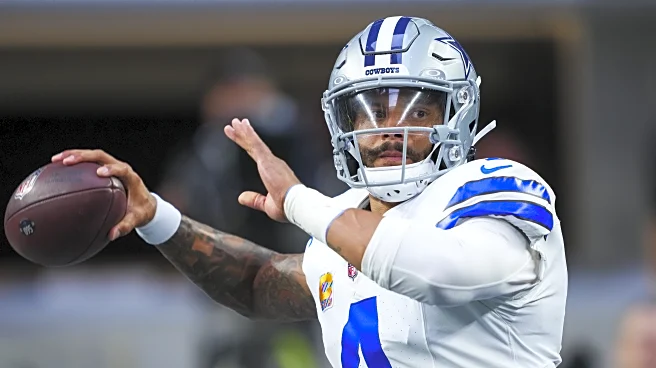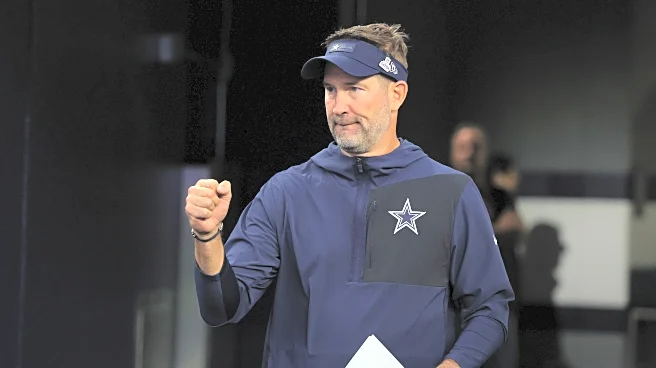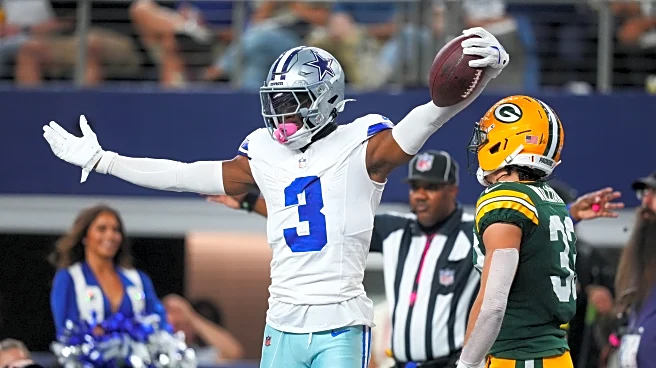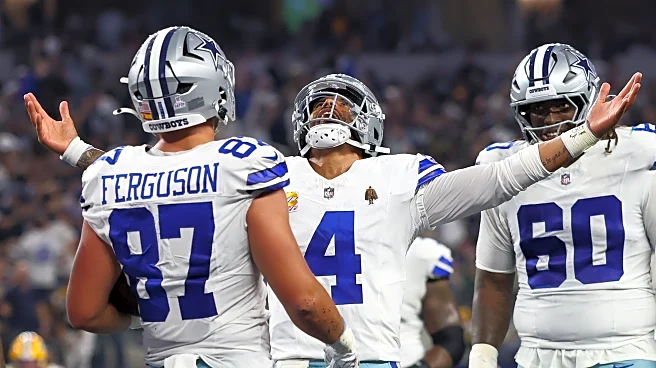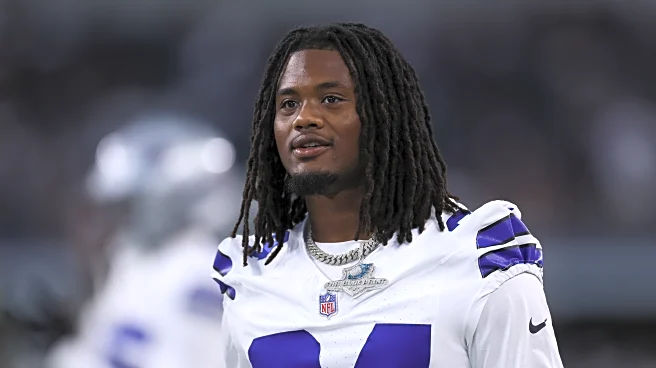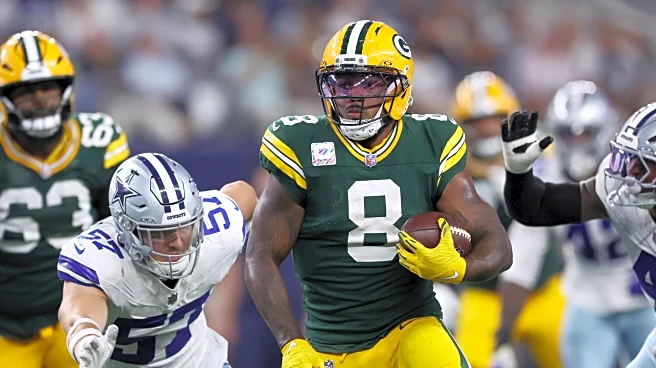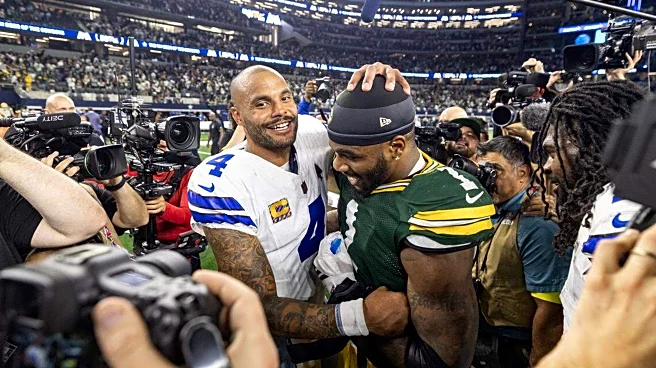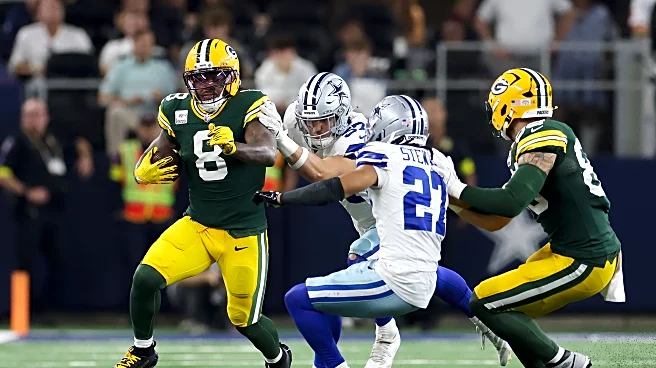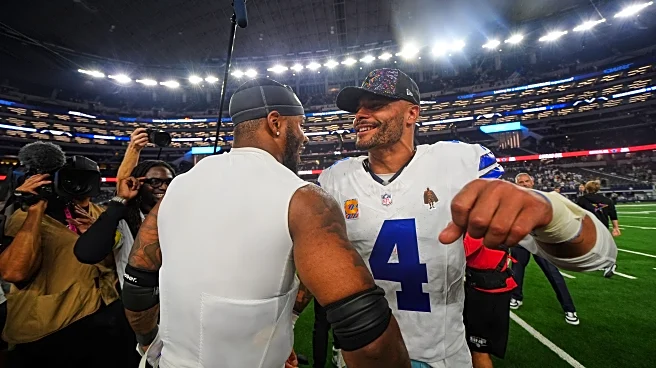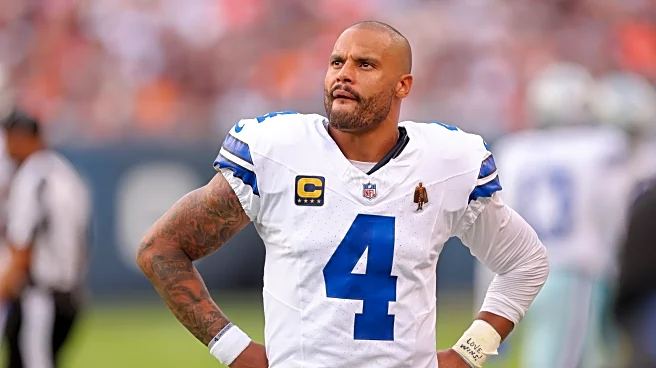The Dallas Cowboys have a lot to figure out before they can call themselves contenders. And that’s because their defense is bad. They are all out of sorts with players in the wrong spots, and a play-after-play
display of chickens with their heads cut off. It’s unsettling.
While improved communication and better awareness of their assignment are reasons to cling to hope for the defense, at least the Cowboys can say their offense is clicking, and clicking quite well. Through four games, they have gained the most yards in the NFL and have put up 114 points, good enough for top five in the league. What is amazing about this feat is that they have done this while being without their top offensive weapon, CeeDee Lamb, for two games, and missing two starting interior offensive line starters, Cooper Beebe and first-round rookie Tyler Booker. How is that possible? How are the Cowboys having so much success on offense despite these challenges?
This onion has many layers, but a big reason for their success centers around the addition of three new offensive coaches – head coach/playcaller Brian Schottenheimer, offensive coordinator Klayton Adams, and offensive line coach Conor Riley. It’s hard to know exactly how much of each coach is responsible for what, but what we can say is that the things they came in to do, they’re doing. This resides around strong communication, a clever plan of attack, and all hands on deck in carrying it out. When you look closely at the Cowboys’ offense, this is exactly what’s going on.
The presence of a rushing attack
This was the elephant in the room most of last season. The Cowboys’ offense was one-dimensional thanks to a rushing attack that only gained 4.0 yards per carry, ranking them third-worst last season. Currently, the team is ranked fourth-best in the league with a 5.1 yards per carry. It’s a night-and-day difference. Why is it so much better? Answer, part personnel, part scheme.
When it comes to the running backs themselves, the duo of veteran free agents Javonte Williams and Miles Sanders is working out nicely. With each game, it feels more and more validated that Williams was the right guy for the lead running back job. He’s doing everything asked of him. He shows great patience, finds the creases, and hits the holes hard. Four-yard gains are churned into seven thanks to his physical running style. He’s a chain-mover as his 19 first downs are second-best in the league. Williams also adds help in pass protection as he’s regularly used to pick up blitzes or chip pass rushers. And he quietly adds 20 yards a game as a receiver.
Miles Sanders has been an effective complementary piece. He’s only getting a third of the work as Williams, but is actually rushing at a higher efficiency. His running style offers a little more wiggle and opportunities for bigger runs. Both he and Williams joined the team under scrutiny because they each only averaged a measly 3.7 yards last year. They were viewed as cheap, untalented options; however, within this offense, both are averaging at least 5.0 yards per carry. And that is because the rushing attack is a team effort.
The coaching staff does a great job of putting extra blockers in good spots. The use of tight ends Jake Ferguson, Luke Schoonmaker, and Brevyn Spann-Ford mirrors what Klayton Adams did in Arizona with Trey McBride, Tip Reiman, and Elijah Higgins. For the Cowboys, there is constant motion and repositioning of the tight ends. Whether they end up as a fullback, on the edge, or somewhere in the middle when the ball is snapped, the repeated use of these extra blockers is opening up holes for the running backs. We should also include Hunter Luepke in this conversation. Between these four athletic pass-catching blockers, the Cowboys’ offense provides effective contributions with short passes and added reinforcements in the running game.
Keeping Dak upright
The additions of Adams and Riley not only came with high hopes for the running game, but both coaches also had a great track record in protecting their quarterbacks. This has been a big issue for Dallas in the past, as they have been hit with injuries along the offensive line, which has made for some difficult days for Prescott. And when you consider that the Cowboys have already faced some tough defensive fronts and that they are without two of their starting offensive linemen, you might expect things to be a hot mess.
It’s not, though. In fact, it’s quite the contrary. Prescott has been sacked on only 3.4% of his dropbacks this season, ranking in the top five and achieving the lowest rate of his career. The Adams/Riley effect is living up to their reputation. How are they doing it?
Again, this will be a personnel/coaching shared accomplishment. Not enough can be said about how well the Cowboys’ offensive line is playing. It doesn’t matter if you throw in Brock Hoffman and T.J. Bass on the inside or even rotating swing tackle Nate Thomas on the edge, the Cowboys’ players are getting it done. The unit is ranked inside the top ten in both pass-blocking win rate and run-blocking win rate.
Pass-blocking = 66% (8th)
Run-blocking = 73% (9th)
The Cowboys have done a great job bringing in and coaching up the right guys to handle the work in the trenches. While many of these players are still young and developing, the unit as a whole has proven to be effective and continues to show off its depth.
But the pass protection extends farther than just good blocking from the offensive line. Similar to the running game, extra resources are brought in to block in the form of tight ends, fullback, or running backs. It’s a collective effort to identify where the pressure could be coming from and supply adequate protection where needed.
Finally, it’s about being decisive with the football. Which brings us to…
The quarterback
Dak Prescott is off to a great start. It’s comforting to see when you consider that he was struggling last year before his season was cut short due to injury. Things are different this year. Prescott looks a lot more comfortable in the pocket. This is largely attributed to the things going on around him that we touched on already, involving the presence of a running game and the improved pass protection.
While the scheme and execution of others around him have helped immensely, Prescott is flourishing in this new environment. Multiple things are contributing to his success. For starters, he is communicating extremely well pre-snap. There is a lot of “window dressing” that goes on prior to the ball being snapped, but you can see him diagnosing the defense, calling out protection, and changing things up as needed. The communication is working well as Prescott never looks frazzled.
This is helping Dak be more decisive. Gone are the days when he’s seen constantly holding the ball, looking for somewhere to go with the ball. He knows where he wants to go, and he delivers it. This is not to say that the play designs themselves have improved, and the spacing is better. Prescott is still making tight-window throws. In fact, he ranks third in the league in aggressive throws, with 19.9% of his throws being in tight windows. He’s just more confident in what is available and steps up and fires.
Not only is Prescott making good decisions with the football, but he’s making good throws. He has a career-high 73% completion rate. And it’s not all of the dink-and-dunk variety. Dak is leading the league with 1,119 passing yards, so whether it’s the small stuff or the bigger stuff, Prescott is racking up the yardage. And he’s doing so while also having a career-low 7.9% bad throw rate. That’s an impressive achievement. Lead the league in passing while also taking great care of the football. Credit the coaching staff for putting him in good situations, but Prescott’s play is helping the offense fire on all cylinders.

